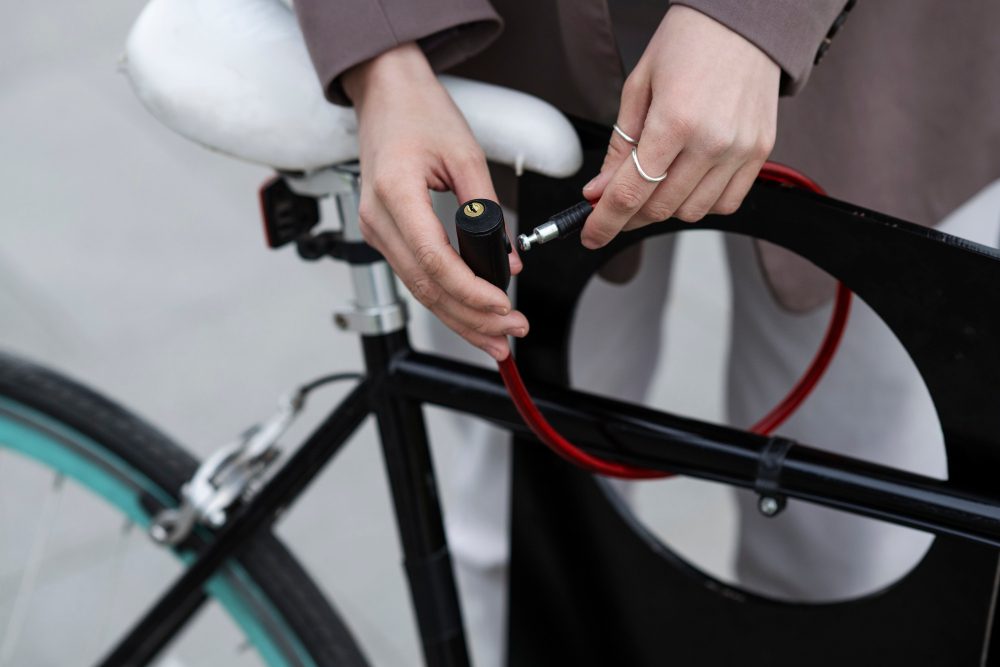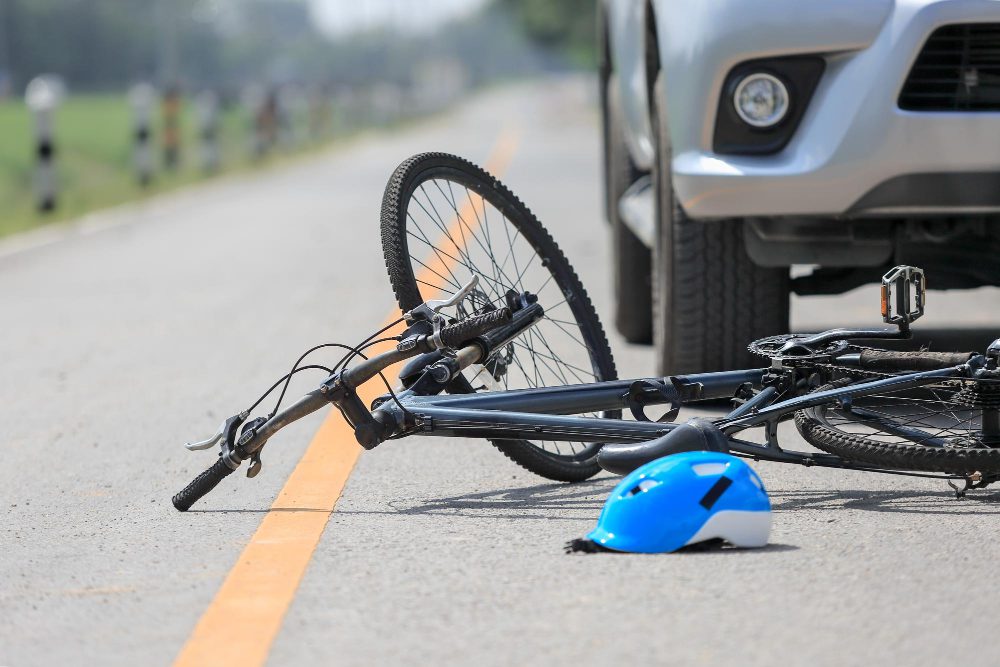How do you ride a bike without crashing?
Riding a bike is an enjoyable and practical means of transportation that many people in the UK rely on. However, it’s natural to have concerns about safety and avoiding accidents while cycling. To help you ride a bike without crashing, we’ve compiled some essential tips and techniques that will enhance your biking experience and keep you safe on the road.
1. Wear the Proper Safety Gear
Before embarking on a bike ride, it’s crucial to wear the appropriate safety gear. This includes a well-fitting helmet that meets the necessary safety standards. Helmets provide vital protection for your head in case of an accident. Additionally, consider wearing bright-colored clothing or reflective gear to increase your visibility to other road users.
2. Perform Regular Bike Maintenance
Regular bike maintenance is essential to ensure your bicycle is in good working condition. Check your brakes, tires, and gears regularly to make sure they are functioning correctly. Lubricate the chain and ensure all parts are tightened properly. A well-maintained bike not only improves your riding experience but also reduces the risk of mechanical failures that could lead to accidents.
3. Know and Follow Traffic Rules
One of the fundamental aspects of riding a bike safely is understanding and obeying traffic rules. Adhere to traffic signs, signals, and road markings. Make proper use of hand signals to communicate with other road users when turning or changing lanes. Remember to ride in the same direction as traffic flow, and always yield to pedestrians.
4. Be Aware of Your Surroundings
Paying attention to your surroundings is crucial when riding a bike. Stay alert and constantly scan the road for potential hazards such as parked cars, opening doors, potholes, or pedestrians stepping into the road. Avoid distractions like using mobile phones or wearing earphones that may hinder your ability to hear approaching vehicles or other warning sounds.
5. Practice Defensive Cycling
Practicing defensive cycling can significantly reduce the risk of accidents. Be aware of blind spots and assume that other road users might not see you. Keep a safe distance from vehicles and avoid riding too close to parked cars. Anticipate potential dangers and maintain a buffer zone around your bike to allow for sudden stops or evasive maneuvers if necessary.
6. Improve Your Cycling Skills
Improving your cycling skills through training and practice can enhance your overall safety on the road. Consider taking a cycling proficiency course to learn advanced techniques, such as effective braking, cornering, and controlling your bike at different speeds. The more confident and skilled you become, the better equipped you’ll be to handle various situations on the road.
Remember, cycling safely is not only about protecting yourself but also being considerate of other road users. Respecting traffic rules and displaying courtesy towards pedestrians and drivers can contribute to a harmonious and safe cycling environment.
By following these tips and consistently practicing safe cycling habits, you can enjoy the numerous benefits of riding a bike while minimizing the risk of accidents. Remember, prevention is key, and taking proactive measures to ensure your safety will make every bike ride an enjoyable experience.
What is Cyclist Knee?
Understanding the Common Cycling Injury
Cyclist Knee, also known as patellofemoral pain syndrome or anterior knee pain, is a common overuse injury that affects many cyclists. It is characterized by pain and discomfort around the front of the knee, specifically behind or around the kneecap.
Causes of Cyclist Knee
There are several factors that can contribute to the development of cyclist knee. These include:
- Bike Fit: Poor bike fit, such as improper saddle height or position, can put excessive stress on the knee joint.
- Overtraining: Riding long distances or increasing mileage too quickly without proper rest can lead to overuse injuries like cyclist knee.
- Improper Pedaling Technique: Inefficient pedaling technique, such as excessive outward or inward knee movement, can strain the knee joint.
- Muscular Imbalances: Weakness or imbalance in the muscles surrounding the knee, particularly the quadriceps and hamstrings, can contribute to knee pain.
Preventing and Managing Cyclist Knee
Fortunately, there are steps you can take to prevent and manage cyclist knee:
- Proper Bike Fit: Ensuring your bike is properly fitted to your body can help minimize stress on the knee joint.
- Gradual Progression: Avoid sudden increases in training intensity or mileage. Gradually build up your riding distance and intensity to give your body time to adapt.
- Strength Training: Incorporate exercises that target the muscles around the knee, such as squats and lunges, to improve strength and stability.
“Taking preventative measures such as having a professional bike fit and incorporating strength training exercises can significantly reduce the risk of developing cyclist knee.”
Seeking Professional Help
If you are experiencing persistent knee pain or suspect you may have cyclist knee, it is advisable to seek professional help. A physiotherapist or sports therapist can assess your condition and provide appropriate treatment and rehabilitation exercises.
What is the most common overuse injury in cycling?
Cycling is a popular form of exercise and means of transportation for many people in the UK. However, with the repetitive nature of the sport, overuse injuries are common among cyclists. One of the most prevalent overuse injuries in cycling is patellofemoral pain syndrome, commonly known as “cyclist’s knee”.
The Causes of Patellofemoral Pain Syndrome
Patellofemoral pain syndrome occurs when the cartilage under the kneecap becomes irritated due to the repetitive motion of pedaling. This can be caused by factors such as:
- Poor bike fit: Incorrect bike setup, such as saddle height or handlebar position, can put unnecessary stress on the knees.
- Overtraining: Pushing yourself too hard without proper rest and recovery can lead to overuse injuries.
- Muscle imbalances: Weakness or tightness in certain leg muscles can affect the tracking of the kneecap.
- Pedaling technique: Improper pedaling technique, such as excessive toe pointing or excessive inward or outward movement of the knees, can contribute to knee pain.
Treatment and Prevention
If you experience symptoms of patellofemoral pain syndrome, it is important to seek medical advice. Treatment may include:
- Rest and ice: Taking a break from cycling and applying ice to the affected area can help reduce inflammation.
- Physical therapy: Strengthening exercises and stretching can address muscle imbalances and improve knee stability.
- Bike fit adjustments: Ensuring your bike is properly fitted to your body can alleviate stress on the knees.
It is crucial to listen to your body and not ignore any persistent pain or discomfort. Early intervention can prevent more serious injuries in the long run.
To prevent patellofemoral pain syndrome and other overuse injuries, cyclists should:
- Gradually increase training intensity and mileage.
- Incorporate cross-training and strength training exercises into their routine.
- Pay attention to proper bike fit and technique.
- Warm up and cool down before and after rides.
- Listen to their bodies and take rest days when needed.
In Conclusion
Patellofemoral pain syndrome is the most common overuse injury in cycling, affecting many riders in the UK. By understanding the causes and implementing proper prevention strategies, cyclists can reduce the risk of developing this painful condition and enjoy their rides without interruption.
What happens when you overtrain cycling?
1. Introduction
Cycling is a great way to stay fit and enjoy the outdoors, but it’s important to find the right balance when it comes to training. Overtraining can have negative effects on your body and performance, so it’s essential to understand what happens when you push your limits too far.
2. Physical Impact
Overtraining in cycling can lead to a range of physical symptoms. These may include persistent fatigue, decreased performance, increased susceptibility to illness, and a higher risk of injuries such as stress fractures or muscle strains. Training beyond your body’s capacity can also lead to hormonal imbalances and a weakened immune system.
3. Mental Impact
Overtraining not only affects your physical well-being, but it can also take a toll on your mental health. Feeling constantly fatigued and struggling to see progress in your performance can result in reduced motivation and anxiety. It’s important to listen to your mind and body and take appropriate rest when needed.
4. Decreased Performance
Contrary to popular belief, pushing harder and training more does not always result in improved performance. Overtraining can actually lead to a decline in performance. Your body needs time to recover and adapt to the stress of training. Without proper recovery, you may experience a plateau or even a decline in your cycling abilities.
5. Increased Risk of Injury
Overtraining puts excessive strain on your body, increasing the risk of injuries. When you overtrain, your muscles and joints may not have sufficient time to repair themselves, leading to overuse injuries. It’s important to give your body adequate rest and recovery time to prevent these injuries.
6. Recommended Training Practices
To avoid the negative effects of overtraining, here are some recommended practices:
- Gradually increase training intensity and duration.
- Include rest days in your training schedule to allow for recovery.
- Listen to your body and adjust your training accordingly.
- Follow a balanced diet to support your training.
- Consider working with a qualified coach to create a personalized training plan.
7. Conclusion
While it’s essential to challenge yourself and push your limits, overtraining can have detrimental effects on both your physical and mental well-being.
Remember, consistency and balance are key to successful and enjoyable cycling.
Listen to your body, prioritize rest and recovery, and you’ll be able to ride without crashing and reap the benefits of this fantastic sport.



